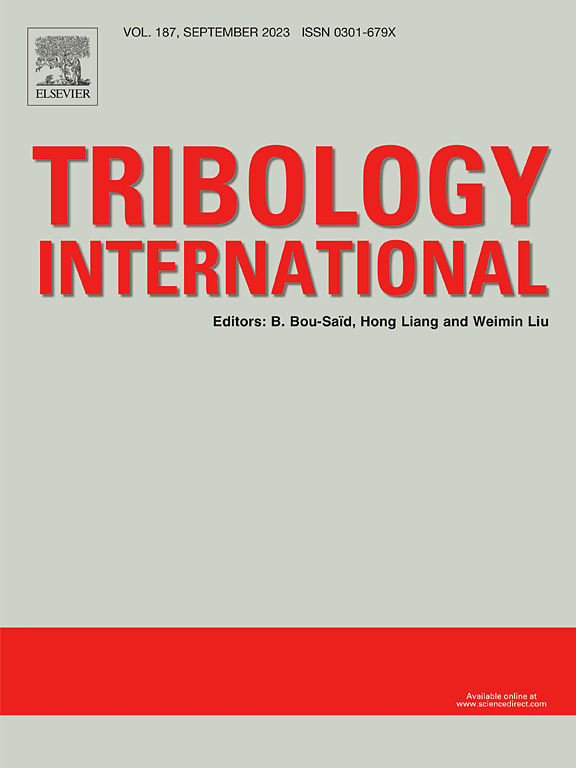Synergistic lubrication mechanism of CeO2 nano-additives and friction modifiers in PAO/DLC solid-liquid composite lubricating system
IF 6.1
1区 工程技术
Q1 ENGINEERING, MECHANICAL
引用次数: 0
Abstract
Nano additives exhibit efficient anti-wear and friction reducing properties for various friction materials, thus having broad application prospects in engine oil. The synergistic mechanism between friction modifiers and nano additives is a key issue in the development of energy-saving engine oil. In this paper, the tribological properties of oleylamine (OM) modified CeO2 nanoparticles and commercial organic friction modifiers glyceryl monooleate (GMO), glycol oleate (T403B), benzotriazole aliphatic amine (T406E) and molybdenum dithiocarbamate (MoDTC) in PAO/DLC solid-liquid composite lubricating system were investigated. It was found that only when CeO2 nanoparticles were combined with GMO, the anti-wear and friction reduction performance of the system was better than that of nano additives, any friction modifiers, and their combination additives. The synergistic effect was demonstrated in the boundary lubrication range under reciprocating sliding conditions and fully lubricated range in the S-curve experiment under rotating sliding mode. Three-dimensional topography, EDS typical element distribution, and Raman analysis were performed on the worn surface, and the adsorption behavior of additives on metal and DLC surfaces was studied using quartz crystal microbalance (QCM-D). It was found that only lubricated with CeO2 + GMO, a viscoelastic composite adsorption layer with both high adsorption quality and high adsorption layer density could be formed on the metal and DLC surfaces simultaneously. The adsorption layer has excellent tribological properties of high load-bearing capacity and low friction, which not only overcomes the high friction problem of CeO2 nanoparticle solid tribofilm, but also avoids the high wear defect of tribofilm formed by friction modifier.
求助全文
约1分钟内获得全文
求助全文
来源期刊

Tribology International
工程技术-工程:机械
CiteScore
10.10
自引率
16.10%
发文量
627
审稿时长
35 days
期刊介绍:
Tribology is the science of rubbing surfaces and contributes to every facet of our everyday life, from live cell friction to engine lubrication and seismology. As such tribology is truly multidisciplinary and this extraordinary breadth of scientific interest is reflected in the scope of Tribology International.
Tribology International seeks to publish original research papers of the highest scientific quality to provide an archival resource for scientists from all backgrounds. Written contributions are invited reporting experimental and modelling studies both in established areas of tribology and emerging fields. Scientific topics include the physics or chemistry of tribo-surfaces, bio-tribology, surface engineering and materials, contact mechanics, nano-tribology, lubricants and hydrodynamic lubrication.
文献相关原料
公司名称
产品信息
阿拉丁
dodecane
阿拉丁
petroleum ether
 求助内容:
求助内容: 应助结果提醒方式:
应助结果提醒方式:


